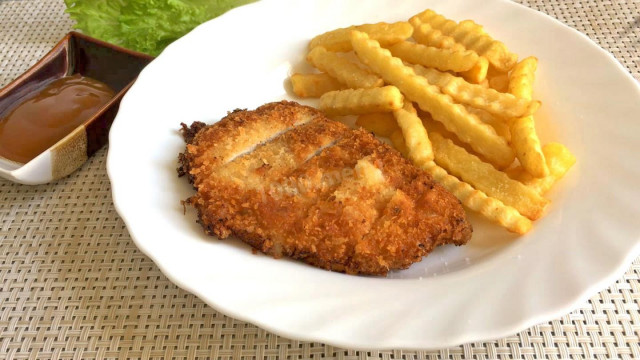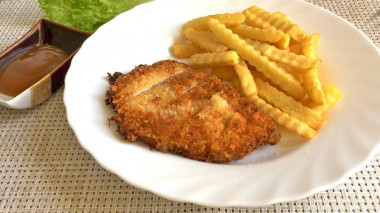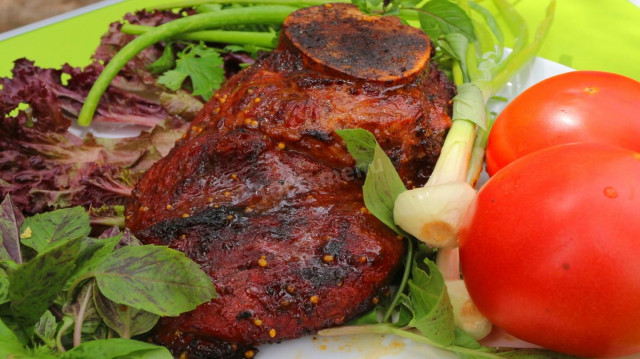Composition / ingredients
Step-by-step cooking
Step 1:
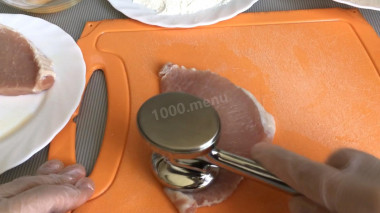
Beat off the pork from both sides.
Step 2:
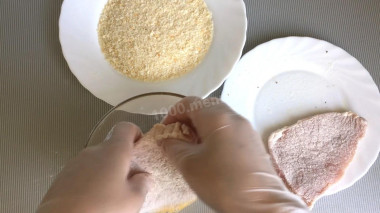
Add salt, pepper, roll in flour.
Step 3:

Then in egg and then in breadcrumbs.
Step 4:
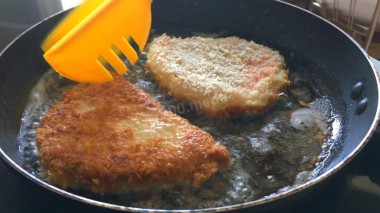
Heat the oil in a frying pan (heating can be checked by throwing a piece of breadcrumbs, if it sizzles on the surface, then you can fry) Lay out the pork chops and fry for 2 minutes on one side, then 2 minutes on the other over high heat. Turn the chops over, reduce the heat to a minimum and fry for another 1-2 minutes on each side.
Step 5:

Put the finished chops on a paper towel to let the excess fat soak in. Cut into strips and serve with any side dish.
Tonkatsu is a pork fillet, or loin, 2-2.5 cm thick, breaded in breadcrumbs and deep-fried. A ready-made cutlet is usually served with sauce. This sauce, later as well as this dish, called Tonkatsu, was invented by local chefs. The sauce was based on the British fermented Worcestershire (Worcestershire) sauce that appeared on the Japanese islands, to which applesauce was added. This is how Tonkatsu sauce appeared. The sauce is dark, thick and tastes sweet and sour - it goes well with fried meat. At first it was used only with pork schnitzels. But later there were other dishes to which Tonkatsu sauce was served - chicken schnitzels, beef, burgers, meatballs, sandwiches, etc.
There are many variations of tonkatsu and related dishes in Japan. Tonkatsu is the most Japanese dish, usually served with rice, miso soup and pickles. Tonkatsu is also popular as a sandwich or served with Japanese curry. Sometimes served with an egg in a large bowl with rice. Tonkatsu is most often eaten with thick Japanese Worcestershire sauce, which uses mashed apples as the main ingredient, such a sauce is called tonkatsu sauce and often with a small amount of spicy yellow karashi (Japanese mustard) and a slice of lemon. Some people like to use soy sauce instead of tonkatsu sauce. In Nagoya and surrounding areas, tonkatsu, which is eaten with a miso-based sauce. In tonkatsu, you can add ingredients such as cheese or lay the meat with basil or mint leaves, then pan and fry.There are several options for tonkatsu using meat:
Chicken - use chicken meat. This option often appears in Hawaiian dinners.
Menchi katsu - minced meat patties, breaded and deep-fried.
Hamu katsu is a similar ham dish, usually considered budget.
Gyū katsu ("katsu beef"), also known as bīfu katsu, is popular in Kansai, the surroundings of Osaka and Kobe.
Katsukare is a symbiosis of kare-rice and tonkatsu.
Katsudon - a bowl of domburi rice is decorated on top with pork schnitzel with onion gravy and eggs boiled in broth.
Katsusando - tonkatsu sandwiches in various sauces.
Tonkatsu ramen is a tempting combination of ramen noodles and tonkatsu.
Hitokuchi-katsu - mini schnitzels.
Kusi-katsu - deep-fried mini-schnitzels and other ingredients on mini-skewers.
Caloric content of the products possible in the composition of the dish
- Chicken egg - 157 kcal/100g
- Egg white - 45 kcal/100g
- Egg powder - 542 kcal/100g
- Egg yolk - 352 kcal/100g
- Ostrich egg - 118 kcal/100g
- Pork fat - 333 kcal/100g
- Pork meat - 357 kcal/100g
- Pork - low-fat roast - 184 kcal/100g
- Pork chop on a bone - 537 kcal/100g
- Pork - schnitzel - 352 kcal/100g
- Pork Shoulder - 593 kcal/100g
- Boar's leg - 113 kcal/100g
- Pork - 259 kcal/100g
- Whole durum wheat flour fortified - 333 kcal/100g
- Whole durum wheat flour, universal - 364 kcal/100g
- Flour krupchatka - 348 kcal/100g
- Flour - 325 kcal/100g
- Vegetable oil - 873 kcal/100g
- Salt - 0 kcal/100g
- Pepper - 26 kcal/100g
- Breadcrumbs - 347 kcal/100g

